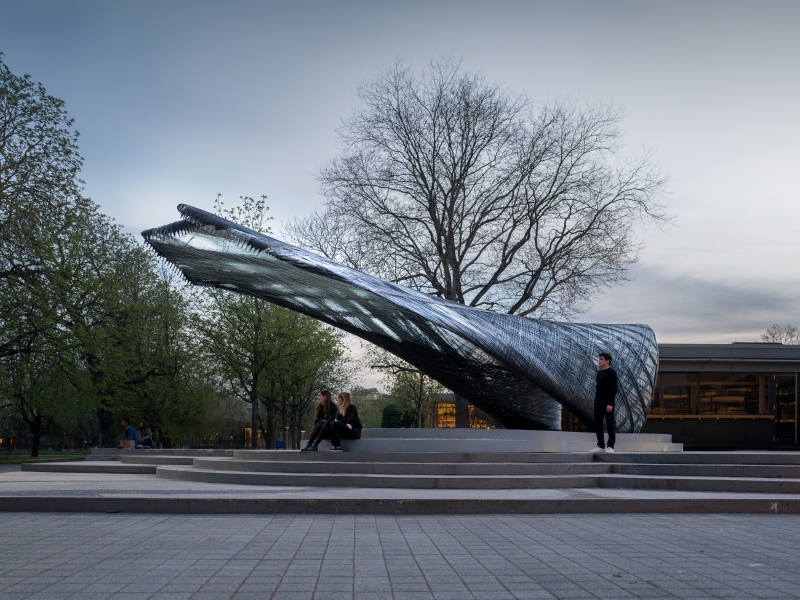The project that I decided to choose is the ICD/ITKE Research Pavilion 2016-17: Interactive Panorama by Heiko Stachel. This research pavilion investigates building scale fabrication of glass and carbon-fibre reinforced composites. I was attracted to it due to its unique form, and I admire the beautiful cantilever structure that incorporates a sort of weaving pattern. Due to the fibre composites’ lightweight and long-span characteristics, the project was carried out using different methods: a combination of unmanned aerial vehicles (UAE), which has low payload but long-range, and industrial robots, which is precise, strong but has limited reach. According to the research institute, this design was inspired by “two species of leaf miner moths, the Lyonetia clerkella and the Leucoptera erythrinella, whose larvae spin silk “hammocks” stretching between connection points on a bent leaf”. Certain concepts were abstracted from the biological models such as the combination of bending structures, fibre orientations and hierarchy, and three-dimensional geometries to create the new, innovative form.
The algorithm methods weren’t listed in the research institute’s website, but I assume that the fabrication of this structure is similar to 3d printing, but on a much larger scale. The algorithm somehow transforms the digital model (perhaps done by Rhinoceros), and uses robots to print out the structure layer by layer.
![[OLD FALL 2019] 15-104 • Introduction to Computing for Creative Practice](wp-content/uploads/2020/08/stop-banner.png)




